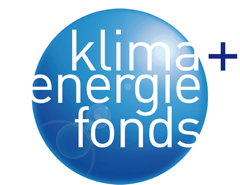
Work Package 2: National emissions requirements in a global context
One basic qualification for the development of the conceptual framework is the acknowledgment that Austrian GHG emissions are embedded into a global context. In WP2 the functionality-based approach to modelling economic transitions is designed to help identify feasible scenarios of transition to a low carbon economy which is essential to meet the 2°C warming target. The approach laid out in WP 2 provides a consistent framework for translating the overall ambition of limiting global warming to national carbon budgets.
National consistency with a globally assumed warming target requires two steps: 1) Specifying global GHG emissions constraints corresponding to an assumed warming target; and 2) Distributing efforts of global climate action among nations. An extended version of the Emissions-Temperature-Uncertainty (ETU) framework (Jonas et al., 2014), provides the means to address both these problems.
The concept of a budget of cumulative global GHG emissions over a certain period is the key to understanding what any assumed warming target means in terms of required global GHG emissions cuts. In the work of Meinshausen et al. (2009) it has been shown that the cumulative emissions in the period 2000 – 2050, rather than emissions in any individual year within this period, are a good predictor of a stabilization level of global warming after 2050 (with respect to pre-industrial period). The ETU framework builds on this finding. In short, it allows us to translate a global warming target (e.g. 2°C above the mean global temperature in the pre-industrial period) into cumulative global GHG emissions until 2050. Knowing this budget and the present level of emissions we are able to derive the rate of required reductions as well as the target level of global GHG emissions in 2050.
The ETU framework is based on the principle of global per capita GHG emissions equity in 2050 (meaning that in 2050 the limit of emissions required to support living and wellbeing of any individual will be equal for anyone, regardless of his/her nationality, age, etc.). The merit of this principle is that it provides targets for per capita emissions in 2050 that are easy to understand, and are universal and meaningful at any scale (from global through national to local).
How this concept could be operationalised in detail is demonstrated in the research plan document as well as on the ClimTrans website.
The demonstration of the general approach is the starting point for identifying the next research steps necessary in the development of a comprehensive open source model. Modelling techniques based on the functionalities approach need to be developed on a broad basis to support the identification of the most feasible solutions and policies aiming at a transformation of the current economy into a low carbon one. To this end, functionalities serve best if considered in interaction, not separately. The same is true for scenarios of GHG emissions resulting from future evolution of different functionalities: they can be assessed best if considered together, forming a complete picture of future emissions.




